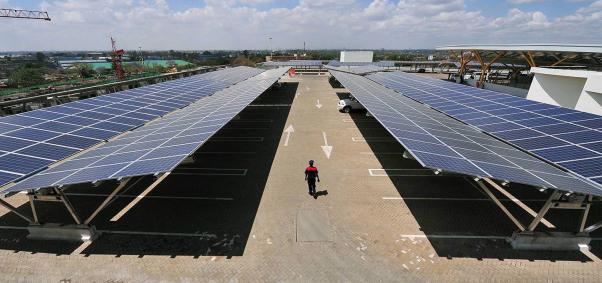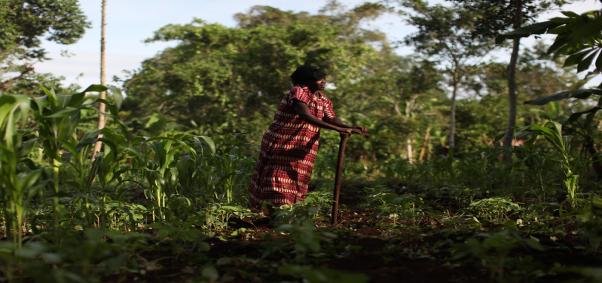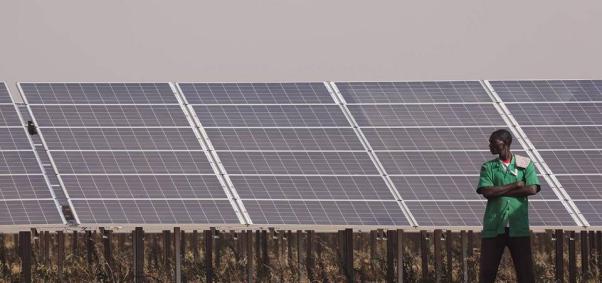
This article was published in This is Africa on September 15, 2016.
Africa’s Green City Opportunity
By Yvo de Boer and Dr. Carlos Lopes
Dr. Carlos Lopes is a member of the Global Commission on the Economy and Climate, visiting professor at the University of Cape Town in the Faculty of Commerce, and a Visiting Fellow at the Oxford Martin School.
Seventy percent of the global population is predicted to live in cities by 2050. Much of this growth will be led by the African continent. The population in African cities is forecast to increase twice as fast as the rest of the world, growing from 471 billion people in 2011 to 1.34 billion in 2050.
Several African megacities will soon stand among the largest in the world. Lagos, Nigeria, for example, will reach more than 25 million people by 2030.
At the same time as Africa undergoes this massive urban transformation, climate change is posing an increasing threat. Changing rainfall patterns have already disrupted hydroelectric power generation in cities such as Kampala, Lagos, Windhoek, and Kinshasa.
Adapting to climate change will cost the continent $7-15bn in just the next five years. If global temperatures rise by 2°C, adaptation could cost as much as $50bn per year by 2050.
If done right, urbanisation can provide a great opportunity to achieve sustainable development in Africa. Compact, connected, and coordinated cities can generate stronger growth, create jobs, alleviate poverty, and significantly reduce the cost of providing services and infrastructure.
They can also improve the quality of people’s lives by lowering traffic congestion and air pollution, not to mention reducing the risk of climate change.
On the other hand, bad urbanisation can constrain a city’s development. Inefficient, congested urban development is already costing lives and impeding productivity. Traffic accidents kill around 1.25 million people annually, more than 90 percent of them in developing countries.
Building a city in an uncoordinated way increases the distance between residents and work opportunities, makes service delivery more expensive, and strains public funds.
In the past, we were somewhat unaware of the costs of bad city planning. Now we should have no doubts about what the benefits of good urban development are versus the costs of poor planning.
It also means that instead of retrofitting good solutions later, we should build better in the first place. Because so much of Africa’s urban environment is yet to be constructed, it has the chance to become a world leader in low-carbon urban development.
Low-carbon and climate-resilient cities may be better able to provide basic services and alleviate poverty than traditional urban models, especially in the context of fiscal and governance restraints that many African cities experience.
Increasing urban density to incentivise public transport, for example, also reduces the public cost of providing water and sanitation infrastructure.
There are many innovative, green solutions springing up in cities across the continent. Johannesburg built a Bus Rapid Transit system, expected to deliver economic returns of up to $900m in its first phase. Cities like Durban and Lagos are using biogas from waste to deliver electricity to local communities.
Still, various barriers will have to be overcome if the significant economic benefits of low-carbon urban action are to be realised.
Just 4 percent of the 500 largest cities in developing countries are deemed creditworthy in international financial markets, and only about 20 percent of the 150 largest cities in the world have the analytics needed for low-carbon planning.
International actors such as businesses, city networks, and development banks can provide technical assistance to help cities to identify, develop, and implement investment-ready programmes or projects that have appropriate levels of risk and return.
Every $1m invested in project preparation could yield $20-50m in capital support for successful projects.
Another problem is that in many countries across sub-Saharan Africa, national urban planning is not properly linked to the economic centres of government, leaving significant gaps in policy development and implementation. This has led to what is known as empty urbanisation.
Many sub-Saharan countries have not experienced a strong link between rising levels of urbanisation and growth in GDP per capita, undermining the potential for a traditional urban dividend.
We need to put effective urban infrastructure at the heart of national economic planning. Cities don’t exist in isolation. With effective coordination from the top, cities can complement and build upon each other to create efficient “systems of cities”. Urbanisation should also be considered in combination with the other core economic systems that are important for sustainable development, such as land use and energy.
If we approach it right, Africa’s urbanisation can be an indispensable asset for economic development. Thirty-five years from now, more than a billion Africans will be living in cities. Let’s make sure to make the right decisions today to make them healthy, prosperous, inclusive, and vibrant.






